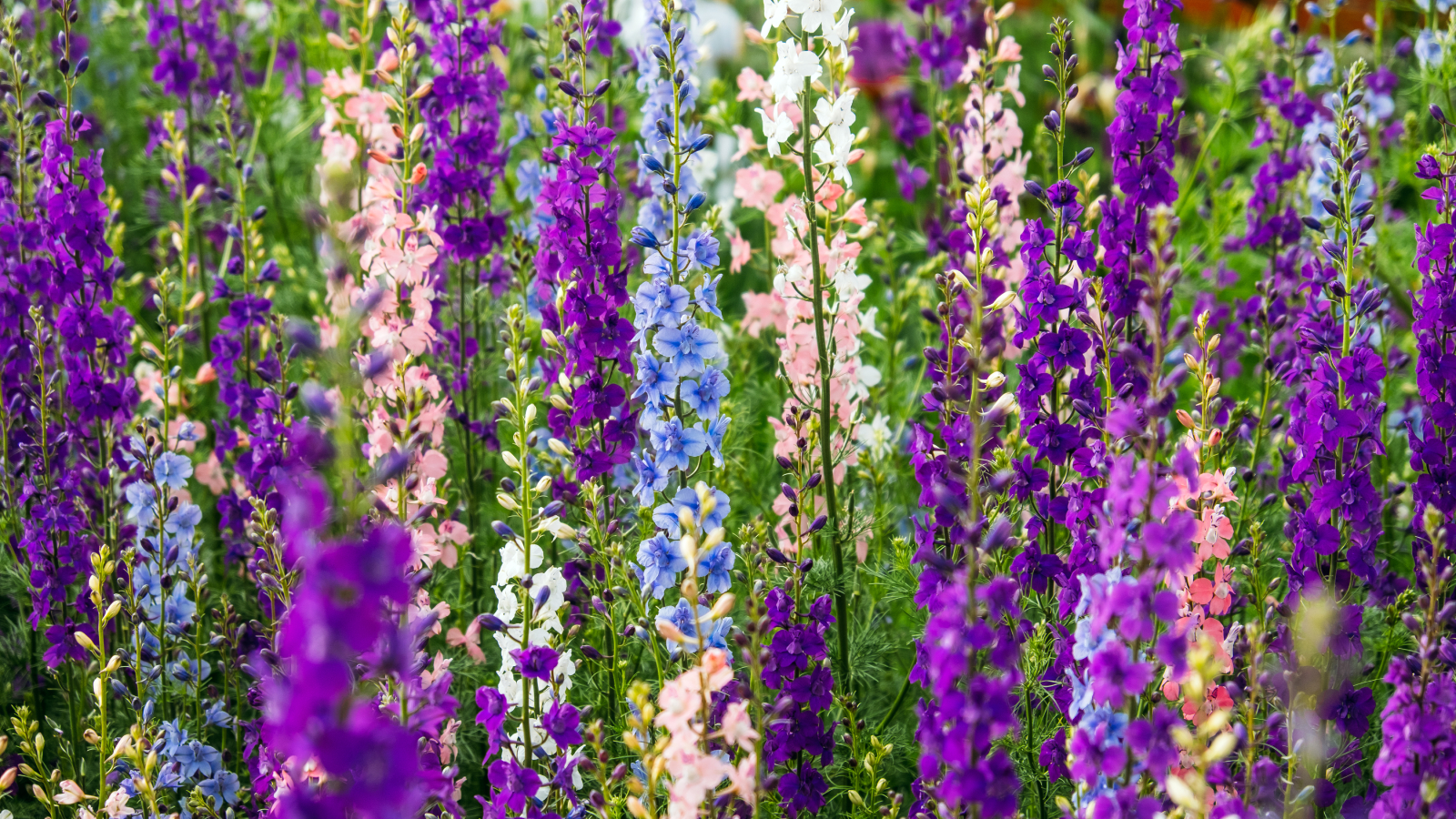Annual Larkspur Flower Care: How To Grow Larkspur Plants In The Garden


Growing annual larkspur flowers (Consolida sp.) provides tall, early-season color in the spring landscape. Once you learn how to grow larkspur, you will likely include them in the garden year after year. Deciding when to plant larkspurs will depend somewhat on your location. Once established, however, larkspur flower care is simple and basic. Learning how to grow larkspur is easier if you are somewhat familiar with local weather patterns, although, of course, there is no guarantee that the weather will cooperate with your gardening schedule.
How to Grow Larkspur Flowers
Most annual larkspur plants are grown from seeds, though planting larkspur seeds can be challenging. When planting larkspur seeds, they must have a cold period before germination. This can be accomplished before planting the seeds, after planting the seeds in peat pots, or after sowing the seeds directly in the flower bed. The most reliable method of chilling larkspur seeds before planting can be done in the refrigerator. Chill protected seeds for two weeks prior to planting. Place seeds in a zip lock sandwich bag and include some damp perlite to provide moisture. Planting larkspur seeds in peat pots or other plantable containers will also work. If there is a building, basement, or cold room where temperatures will remain between 40 and 50 F. (4-10 C.), plant them in moist soil and chill them there for two weeks. Keep in mind that larkspur seeds often will not germinate at temps above 65 F. (18 C.). Learning when to plant larkspurs that have been chilled requires knowing when the first frost date occurs in your area. Planting larkspur seeds should be done early enough before frost for them to begin developing a root system to hold them over through winter. After germination, when seedlings in peat pots have two sets of true leaves, they may be moved into the garden or a permanent container. Growing larkspur flowers do not like to be moved, so plant seeds into their permanent location. Spring planting of larkspur seeds can be done, but flowers may not reach their full potential.
Larkspur Flower Care
Annual larkspur flower care includes thinning sprouting seedlings 10 to 12 inches (25-31 cm.) apart so that each new growing larkspur has enough room to grow and develop its own root system. Staking the tall plants is another aspect of larkspur flower care. Provide support when they are young, with a stake that can accommodate the potential 6 to 8 foot (2 m.) growth. These plants will also require occasional watering during periods of drought. Growing larkspur flowers centered in containers can be part of an eye-catching display. Use containers that won't topple under the weight and height of the growing larkspur flowers. Larkspurs in the garden will often self-seed and can provide more additional larkspur flowers for the following year.
Gardening tips, videos, info and more delivered right to your inbox!
Sign up for the Gardening Know How newsletter today and receive a free copy of our e-book "How to Grow Delicious Tomatoes".

Becca Badgett was a regular contributor to Gardening Know How for ten years. Co-author of the book How to Grow an EMERGENCY Garden, Becca specializes in succulent and cactus gardening.
-
 Looking For Plants To Give You The Soft And Fuzzies? Try These 5 Fuzzy Leaf Plant Options
Looking For Plants To Give You The Soft And Fuzzies? Try These 5 Fuzzy Leaf Plant OptionsLovers of texture, drama, silver foliage and tactile plants will adore these special sensory garden additions. These fuzzy leaf plant options will leave you all aglow
By Susan Albert
-
 Get Ready For A Summer Of Hummers! Grow These Full Sun Hummingbird Plants and Flowers
Get Ready For A Summer Of Hummers! Grow These Full Sun Hummingbird Plants and FlowersIf you’re lucky enough to enjoy a sunny backyard, make sure you are maxing out on your pollinator opportunities and grow these full sun hummingbird plants and flowers
By Tonya Barnett